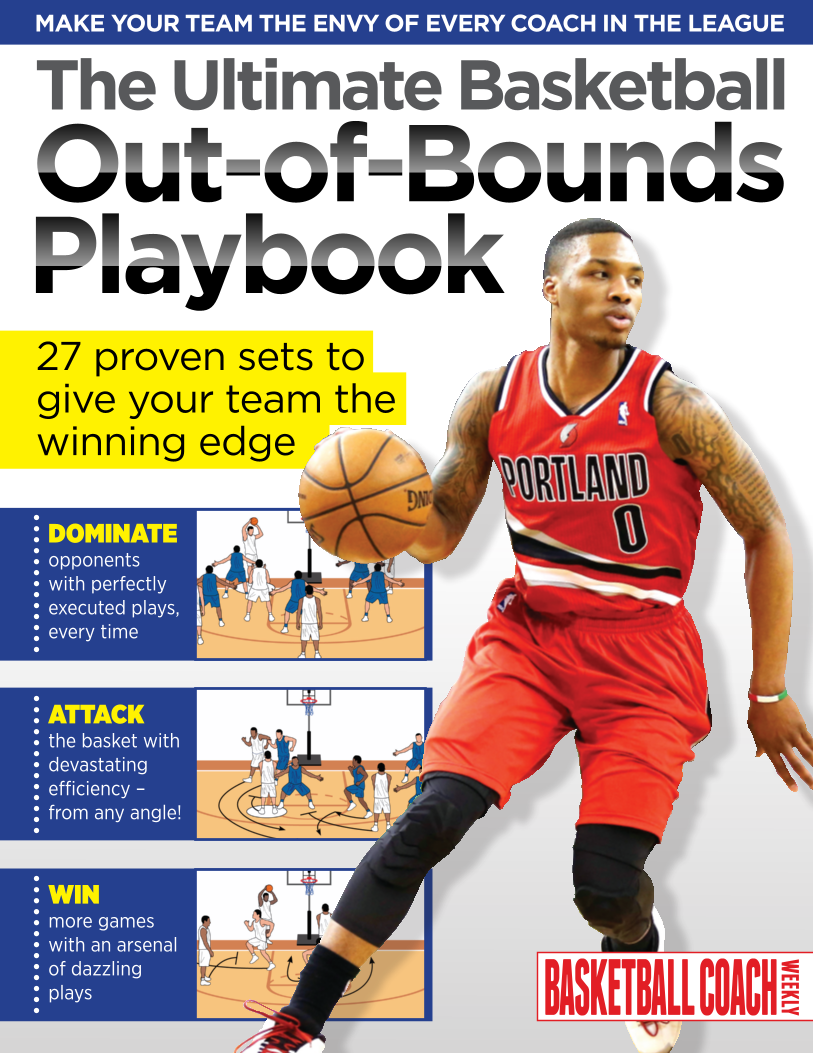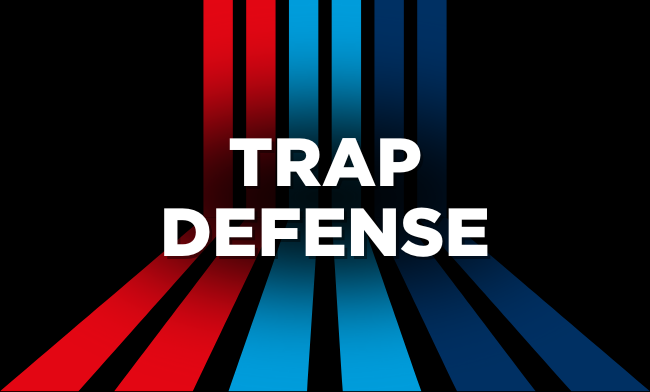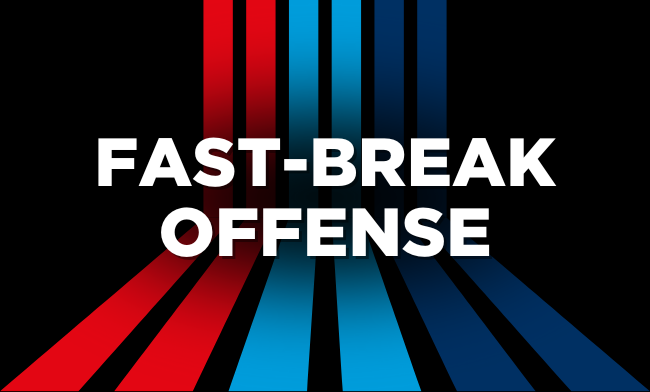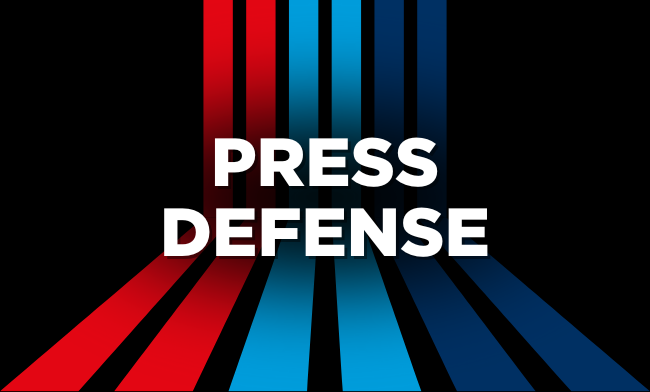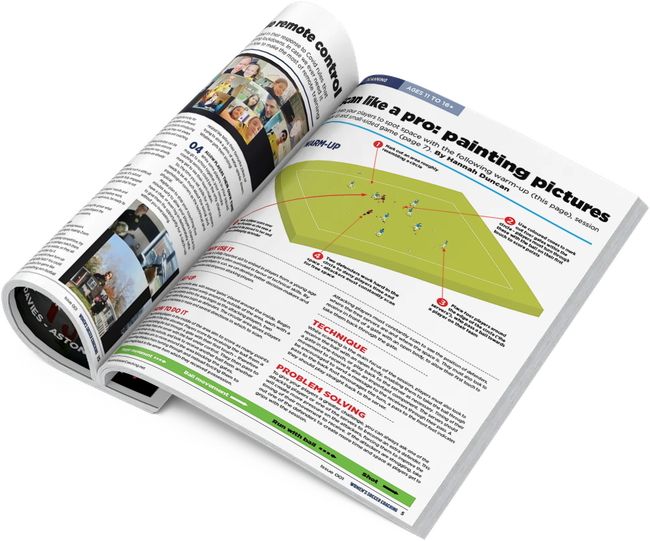Mastering zone defense in basketball: Strategy, types, and drills
Zone defense is a powerful team tactic in basketball that focuses on defending specific areas of the court rather than individual opponents. It’s particularly effective against teams with superior individual talent, as it requires players to work as a unit to protect key scoring zones, forcing the offense into difficult shots or turnovers. Zone defense challenges the offensive team to move the ball quickly and take contested shots, making it a versatile and essential tool for coaches at all levels.
This guide will cover the fundamentals of zone defense, various types of zone strategies, how to coach it, and practical drills to improve its effectiveness.
WHAT IS ZONE DEFENSE?
In a zone defense, each defender is responsible for covering a specific area (or “zone”) of the court rather than marking a single offensive player. The objective is to prevent the offense from penetrating the key area, contesting outside shots, and forcing the offense to shoot from less desirable positions. The defense must communicate and rotate efficiently to cover passing lanes, close out shooters, and block driving lanes.
TYPES OF ZONE DEFENSE
Several zone defense systems are commonly used, each with its own advantages and strategic purposes. Below are the most popular types:
-
2-3 Zone Defense
The 2-3 zone is one of the most widely used zone defenses. It features two defenders at the top of the key (usually guards) and three defenders positioned along the baseline (forwards and a center). This formation is ideal for teams looking to prevent penetration and force the offense into long-range shots. The 2-3 zone is especially effective against teams that lack consistent outside shooting. -
3-2 Zone Defense (or 1-2-2 Zone)
The 3-2 zone defense places three players along the perimeter and two defenders closer to the basket. This formation is ideal for teams playing against strong shooting teams, as it pressures perimeter shooters while still protecting the paint. -
1-3-1 Zone Defense
In a 1-3-1 zone, the defense is structured with one player at the top of the key, three in the middle, and one underneath the basket. This setup is designed to disrupt passing lanes, trap ball handlers on the wings, and force turnovers. It works well against teams that rely on perimeter passing and ball movement. -
Box-and-One Defense
A hybrid defense, the box-and-one combines man-to-man and zone principles. Four defenders set up in a box formation around the key, while one defender marks the opposition’s best scorer in a man-to-man format. This strategy is used when the offense has a dominant player who needs special attention.
WHEN ZONE DEFENSE IS EFFECTIVE
Zone defense is particularly useful in the following situations:
- To Neutralize Fast Players: Zone defense forces the offense to slow down and execute plays, which helps neutralize teams with fast, aggressive players who excel in one-on-one situations.
- To Protect the Paint: Zone defenses are highly effective in protecting the paint and preventing easy drives to the basket. They force teams to take contested shots or attempt lower-percentage shots from the perimeter.
- Against Poor Shooting Teams: When playing against teams that struggle with outside shooting, a zone defense can be highly disruptive, clogging the interior and forcing them into difficult long-range shots.
HOW TO COACH ZONE DEFENSE
Coaching zone defense requires teaching players how to effectively guard their assigned area, communicate with teammates, and rotate quickly to cover open shooters or prevent easy drives.
Key coaching points for zone defense:
- Communication: Defenders must constantly communicate with each other, calling out switches, rotations, and cutters. A quiet zone defense will quickly fall apart.
- Footwork and Anticipation: Teach players to move their feet rather than reach for the ball, staying active in their zone to contest shots and passes. Anticipating the next pass or shot is key to staying one step ahead of the offense.
- Rebounding: One of the potential downsides of zone defense is poor rebounding, as players are focused on covering space rather than boxing out specific players. Emphasizing rebounding fundamentals is crucial for a successful zone defense.
DRILLS FOR ZONE DEFENSE
To master zone defense, teams must practice both positioning and reaction time. Here are a few drills that focus on building an effective zone defense:
-
2-3 Zone Rotation Drill
This drill helps players learn how to rotate quickly and cover passing lanes in a 2-3 zone defense. Players practice moving from one zone to another based on ball movement while communicating with their teammates. -
3-2 Zone Closeout Drill
In this drill, players in the 3-2 zone defense practice closing out on shooters while maintaining their positions to protect the paint. The drill emphasizes quick movement, proper footwork, and active hands to contest shots and force difficult passes. -
Box-Out Rebounding Drill
Since rebounding can be a challenge in zone defense, this drill focuses on improving box-out techniques while playing within a zone system. Players are taught to find a body and box out, even while guarding space rather than an individual opponent.
COMMON MISTAKES IN ZONE DEFENSE
Despite its effectiveness, there are common mistakes teams make when running a zone defense:
- Lack of Communication: Zone defense requires constant communication. Failure to talk on defense leads to missed assignments and open shots.
- Overcommitting to One Area: Defenders must avoid getting caught out of position or overcommitting to the ball, leaving other areas of the zone open.
- Poor Closeouts: Failing to properly close out on shooters can give the offense open looks from three-point range, undermining the purpose of the zone defense.
CONCLUSION
Zone defense is a highly effective tactic for disrupting offensive flow, protecting the paint, and forcing opponents into difficult shots. By mastering the fundamentals of zone defense, practicing with purpose-driven drills, and improving communication and positioning, teams can greatly improve their defensive performance. Whether it’s a classic 2-3 zone or a hybrid box-and-one, understanding when and how to deploy zone defense can give your team a strategic edge on the court.
Newsletter Sign Up
Coaches' Testimonials

John Allen, AAU National Boys Basketball Commissioner

Wade Wolff, Colfax Youth Development League
Further Reading
Newsletter Sign Up
Coaches Testimonials

John Allen, AAU National Boys Basketball Commissioner

Wade Wolff, Colfax Youth Development League
Discover the simple way to become a more effective, more successful basketball coach
In a recent survey 89% of subscribers said Basketball Coach Weekly makes them more confident, 91% said Basketball Coach Weekly makes them a more effective coach and 93% said Basketball Coach Weekly makes them more inspired.
*includes 3 coaching manuals
Get Inspired
All the latest techniques and approaches
Basketball Coach Weekly offers proven and easy to use basketball drills, coaching sessions, practice plans, games, warm-ups, training tips and advice.
We're at the cutting edge of basketball coaching since creating resources for the grassroots youth coach, following best practice from around the world and insights from the professional game.


